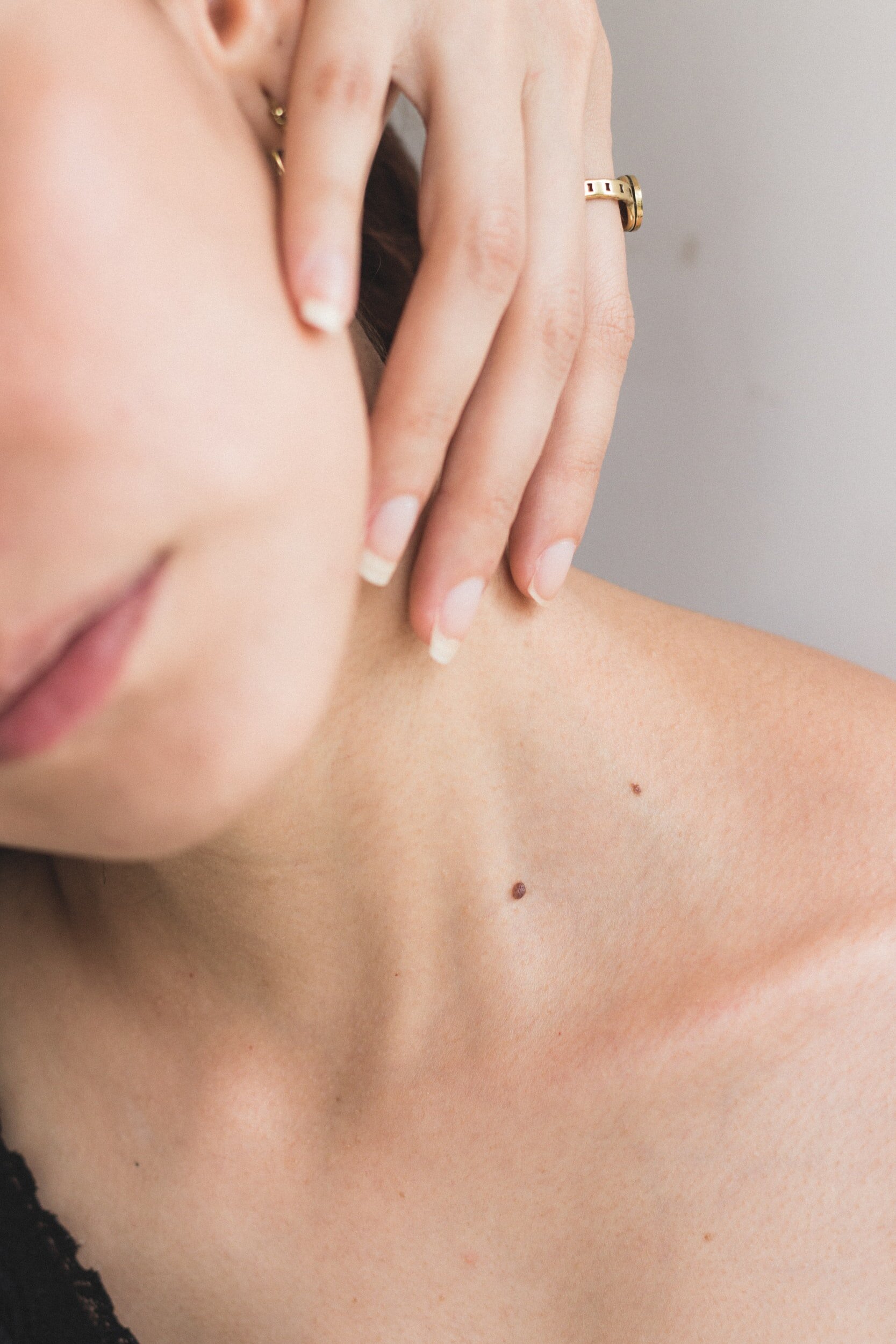

Photo by Angélica Echeverry on Unsplash
Summer in the northern hemisphere is finally ending, and with it, hay fever – those annual allergies that yield stuffy-nosed, blurry-eyed colleagues at every office. For some unfortunate few, these allergies are debilitating. For most, they’re merely a nuisance.
Like food and seasonal allergies, metal allergies are no joke. Nickel allergies alone impact up to 17% of women and 3% of men. In jewelry, metal allergies can result in typically minor but unsettling reactions from itching to rashes to swelling. (It’s worth noting that discoloration of the skin is most often caused by the oxidization of certain metals as they press against the skin or are exposed to perspiration or humidity. This is not usually a sign of an allergic reaction, though many hypoallergenic metals will avoid this problem due to their chemical composition.)
Fortunately, allergic reactions can be easily avoided with hypoallergenic jewelry, an increasingly popular alternative to some forms of jewelry. We offer a number of hypoallergenic options to ensure that our customers can offer durable, fashionable and nonirritating collections to their discerning customers.
What metals are most likely to cause an allergic reaction in metal-sensitive people?
-
Nickel allergies are the most common in jewelry since nickel, a natural white metal, is often mixed with other metals to form an alloy. (White gold is an alloy of nickel and gold, and even stainless steel can contain as much as 35% nickel.) Most reactions will appear on the skin promptly after contact.
-
Copper is a less known allergen than nickel, but awareness has grown thanks to the popularity of rose gold, an alloy (mix) of gold and copper. For many, rose gold with a high gold concentration in the alloy can alleviate or totally solve this problem by reducing the amount of copper present. Likewise, brass, an alloy of copper and zinc, can cause an allergic reaction. (You can usually identify jewelry with copper alloys because it may leave a faint green mark on the skin as the copper oxidizes.)
What metals should I choose to best serve customers with metal allergies?
The Cleveland Clinic recommends higher-quality metal jewelry instead of costume jewelry to those struggling with many metal allergies.
-
Gold and platinum are much less likely to cause an allergic reaction, which is part of the reason they are used in sensitive medical devices and procedures. Platinum or gold alloys, like rose gold (mentioned above), can still cause an allergic reaction due to the other metal used in the alloy; the best way around this challenge is to ensure the maximum concentration of gold or platinum in the alloy.
-
Silver allergies are extremely uncommon. Unfortunately, pure silver is too soft to use in jewelry, so we rely on alloys that may include allergens. Fortunately, most sterling silver, which is alloyed with other metals like zinc or copper, rarely causes an allergic reaction.
-
Plated jewelry is a great way to address allergy and cost concerns. Gold vermeil is gold electroplated on top of another metal. High-quality gold vermeil, including anything produced by Insider Creations, will provide a sufficiently thick plating to avoid skin contact with the base metal. (Cheaper plating options can be as thin as 0.5 microns and rub off easily, exposing the sensitive material below. Others may use alloys high in nickel to plate the base material, leading to an allergic reaction to the plating itself.)
What if a consumer has a reaction to one of my pieces?
Unfortunately, allergic reactions happen, and it may not always be the fault of the metals you selected for your jewelry. If you’ve done your best but a customer still developed an allergy to one of your pieces, many jewelers suggest:
-
Get the piece plated with a different metal to which your customer is not allergic. Many local jewelers offer this as a service as well.
-
Some recommend applying a thin coat of clear nail polish to any spot the jewelry touches the skin. We’ve never tried this, but many in the industry swear by it.
-
Make sure skin is dry and not over-moisturized before wearing the piece in question.
-
Reduce the amount of time the piece is worn.
If many of your customers are looking for hypoallergenic pieces, it may be time to consider a fully hypoallergenic collection. Speak to our team to learn how Insider Creations can help you launch your hypoallergenic collection today.
Ten articles before and after
Let’s talk pearls | CHURINGA HANDMADE JEWELRY
The Insider | CHURINGA HANDMADE JEWELRY
The Insider | CHURINGA HANDMADE JEWELRY
Launching a jewelry line with email | CHURINGA HANDMADE JEWELRY
Transparency, sustainability and social good | CHURINGA HANDMADE JEWELRY
Connect to the new Insider Creations customer portal | CHURINGA HANDMADE JEWELRY
How to get jewelry designs manufactured | CHURINGA HANDMADE JEWELRY
Supply chain slow-down hits even jewelry | CHURINGA HANDMADE JEWELRY